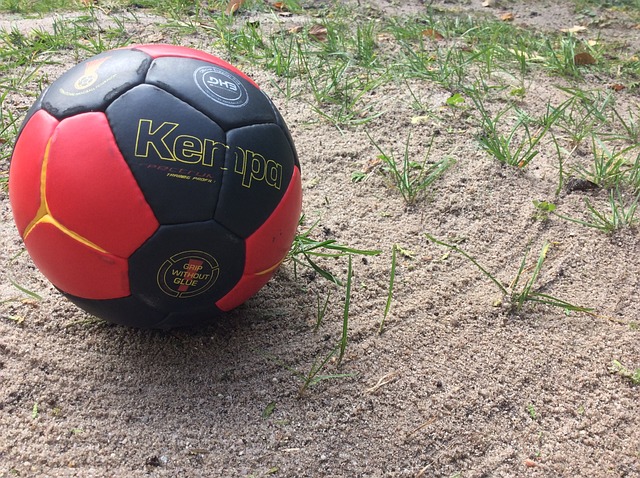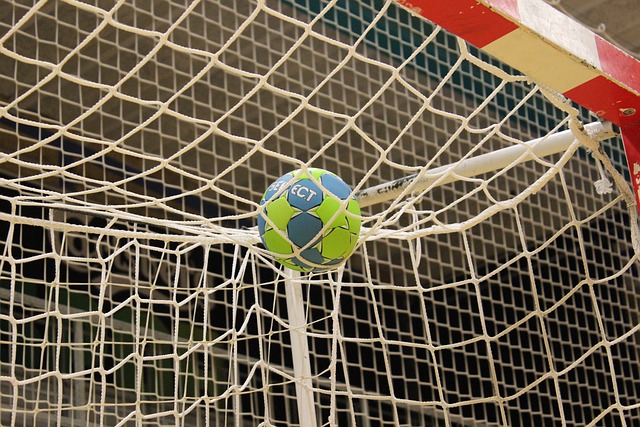Handball is an exhilarating sport that demands speed, agility, and precision. To truly master the game, athletes need a handball ball that can withstand the intensity of their gameplay. Handball ball durability is a critical aspect that directly affects performance, gameplay, and overall enjoyment.
In this article, we will explore the various factors that impact the longevity of handball balls. From the materials used in construction to the effects of environmental conditions, we will delve into the science behind durable handball balls. Whether you’re a seasoned player or a beginner looking to understand the intricacies of this essential equipment, this article will provide valuable insights into optimizing the lifespan of handball balls.
What materials are used in durable handball ball construction?
Durable handball balls are constructed using a combination of high-quality materials that are carefully selected to ensure longevity and performance. The outer cover of the ball is typically made from synthetic leather or polyurethane, known for its durability and resistance to abrasion.
These materials provide a sturdy outer layer that can withstand the impact of intense gameplay without losing its shape or integrity. The inner bladder, responsible for maintaining the ball’s shape and air pressure, is often made of latex or butyl, both of which offer excellent air retention properties. The combination of these materials creates a robust and long-lasting ball that can endure the rigors of the game and withstand repeated use.
How does the quality of stitching affect the longevity of a handball ball?

The quality of stitching plays a crucial role in determining the longevity of a handball ball. A well-constructed ball with high-quality stitching is more likely to withstand the demands of intense gameplay and last longer. Strong and durable stitching ensures that the panels of the ball remain securely attached, preventing them from coming loose or unraveling over time.
It also helps maintain the ball’s shape and integrity, reducing the risk of deformities or damage during play. When purchasing a handball ball, it is essential to check for tightly stitched seams and reinforced stitching at stress points. Investing in a ball with superior stitching quality ensures that it will withstand rigorous use and provide extended durability.
Are handball balls with textured surfaces more durable?
Handball balls with textured surfaces offer enhanced durability compared to smooth-surfaced balls. The texture provides additional grip and friction, allowing players to maintain better control and stability during the game. The textured surface also contributes to the ball’s resistance to wear and tear.
The small bumps or ridges on the surface help distribute the impact of the game evenly, reducing the concentration of stress on specific areas of the ball. This distribution of force minimizes the risk of tears or punctures and helps maintain the ball’s shape and structural integrity. Therefore, handball balls with textured surfaces tend to be more durable and are better suited for intense gameplay and prolonged use.
What impact does ball maintenance have on its lifespan?
Proper ball maintenance is essential for prolonging the lifespan of a handball ball. Regular cleaning and maintenance help remove dirt, sweat, and debris that can accumulate on the ball’s surface, potentially affecting its performance and durability. Cleaning the ball with mild soap and water and wiping it dry after each use prevents the buildup of dirt and grime.
Additionally, maintaining the optimal air pressure within the ball is crucial. Overinflating or underinflating the ball can put stress on the seams and bladder, leading to premature wear and tear. Regularly checking and adjusting the air pressure using a reliable gauge ensures that the ball retains its shape and longevity. By adopting proper maintenance practices, handball players can extend the lifespan of their balls and enjoy consistent performance over time.
How do environmental conditions affect handball ball durability?

Environmental conditions can significantly impact the durability of a handball ball. Exposure to extreme temperatures, high humidity, or moisture can have detrimental effects on the ball’s materials and overall integrity. In hot and dry conditions, the ball may become more rigid and prone to cracking or losing its flexibility.
Conversely, excessive moisture or humidity can cause the ball to absorb water, leading to weight gain and potential mold or mildew growth. It is crucial to store handball balls in a cool and dry environment, away from direct sunlight and excessive humidity.
Proper storage helps maintain the ball’s optimal condition and extends its durability. Additionally, avoiding playing with the ball on abrasive or rough surfaces can help minimize wear and tear caused by friction and abrasion.
Can exposure to sunlight deteriorate the quality of a handball ball?
Yes, prolonged exposure to sunlight can deteriorate the quality of a handball ball. Ultraviolet (UV) radiation from the sun can cause the ball’s materials to degrade over time. The outer cover, especially if made of synthetic materials, may experience discoloration, fading, or brittleness when exposed to direct sunlight for extended periods.
The stitching and seams can also weaken under UV exposure, leading to premature unraveling or breakage. To protect the ball from sunlight damage, it is advisable to store it in a cool and shaded area when not in use. Additionally, using a ball cover or placing the ball in a bag can provide an extra layer of protection against UV radiation and help maintain its quality and durability.
Are there specific storage requirements to enhance ball durability?
Proper storage is crucial to enhance the durability of a handball ball. When not in use, it is important to store the ball in a cool, dry, and well-ventilated area. Excessive heat, moisture, and humidity can have adverse effects on the ball’s materials, leading to deterioration and reduced lifespan.
Ideally, the storage area should be away from direct sunlight, as prolonged exposure to UV radiation can cause the ball to degrade. It is also recommended to store the ball in a bag or ball net to protect it from dust, dirt, and potential damage. By following appropriate storage practices, handball players can ensure that their balls remain in optimal condition and maintain their durability over time.
| Factors | Impact on Durability | Recommended Actions |
|---|---|---|
| Material | Determines overall strength and resistance to wear | Opt for handballs with high-quality synthetic leather or polyurethane covers |
| Stitching Quality | Affects seam strength and prevents premature breakage | Choose handballs with tightly stitched seams |
| Textured Surface | Enhances grip and distributes impact for improved durability | Consider handballs with textured patterns |
| Maintenance | Regular cleaning and proper storage extend the lifespan | Clean with mild soap, inspect for damage, and store in a cool, dry place |
| Environmental Conditions | Temperature and humidity affect ball integrity | Store and use handballs in moderate temperature and humidity levels |
What role does air pressure play in maintaining ball longevity?
Air pressure plays a crucial role in maintaining the longevity of a handball ball. The correct air pressure ensures that the ball retains its shape, bounce, and overall performance. Overinflating the ball can put excessive stress on the seams and bladder, potentially leading to ruptures or damage.
On the other hand, underinflation can result in a flat or sagging ball, affecting its responsiveness and playability. It is essential to check and maintain the recommended air pressure specified by the manufacturer.
Using a reliable pressure gauge, handball players should regularly monitor and adjust the air pressure as needed. By keeping the ball properly inflated, players can extend its lifespan and enjoy consistent performance.
How does the playing surface affect the wear and tear of handball balls?
The playing surface significantly impacts the wear and tear of handball balls. Different surfaces, such as indoor courts, outdoor fields, or artificial turf, can have varying levels of abrasiveness and impact on the ball’s durability.
Rough or abrasive surfaces, including concrete or asphalt, can cause faster degradation of the outer cover, leading to scuffs, tears, or punctures. Indoor courts with smooth and clean surfaces generally result in less wear and tear.
It is important to consider the type of playing surface and choose a ball that is specifically designed for the intended environment. Using the appropriate ball for each surface and taking precautions to minimize contact with abrasive surfaces can help preserve the ball’s condition and extend its lifespan.
Do different playing styles influence ball durability?
Yes, different playing styles can influence the durability of a handball ball. Aggressive and powerful playing styles that involve frequent striking, throwing, and intense physical contact can subject the ball to higher levels of stress and impact. This can result in accelerated wear and tear, especially if the ball comes into contact with hard surfaces or experiences rough handling.
On the other hand, players with more controlled and finesse-based playing styles may place less stress on the ball, thereby reducing the risk of damage. Players need to be aware of their playing style and choose a ball that can withstand the demands of their game. By selecting a ball designed for their style and taking proper care, players can enhance the durability of their handball balls.
Can the frequency of usage impact the lifespan of a handball ball?

Yes, the frequency of usage can impact the lifespan of a handball ball. Regular and frequent use exposes the ball to more wear and tear, increasing the likelihood of damage or deterioration. Each time the ball is used, it experiences impact, friction, and stress that can gradually wear down its materials, stitching, and bladder.
It is important to keep track of the usage and monitor the condition of the ball over time. If signs of significant wear or damage become evident, it may be necessary to replace the ball to ensure optimal performance and safety. By balancing the frequency of usage and rotating between multiple balls, players can help extend the lifespan of their handball balls and enjoy consistent gameplay.
Are there specific care tips to prolong the durability of handball balls?
Yes, there are specific care tips that can help prolong the durability of handball balls. Regularly cleaning the ball with mild soap and water removes dirt, sweat, and debris that can accumulate on the surface and affect its performance. It is important to avoid using harsh chemicals or abrasive cleaners that could damage the ball’s materials.
Additionally, storing the ball in a cool, dry, and shaded area when not in use helps prevent exposure to extreme temperatures, sunlight, moisture, and humidity, which can degrade the ball’s quality. Properly inflating the ball to the recommended air pressure and regularly checking and adjusting the pressure as needed ensures that it maintains its shape and responsiveness.
By following these care tips, handball players can prolong the durability of their balls and enjoy consistent performance over a longer period.
Given These Points
Handball ball durability is influenced by various factors, ranging from the materials used in construction to the effects of environmental conditions. By understanding these factors and taking appropriate measures, players can ensure that their handball balls last longer, maintain optimal performance, and provide a consistent playing experience.
With proper care, regular maintenance, and selecting high-quality handball balls, athletes can focus on the game, confident in their equipment’s durability. So, gear up, step onto the court, and enjoy the thrilling world of handball with the assurance of a long-lasting and reliable handball ball.